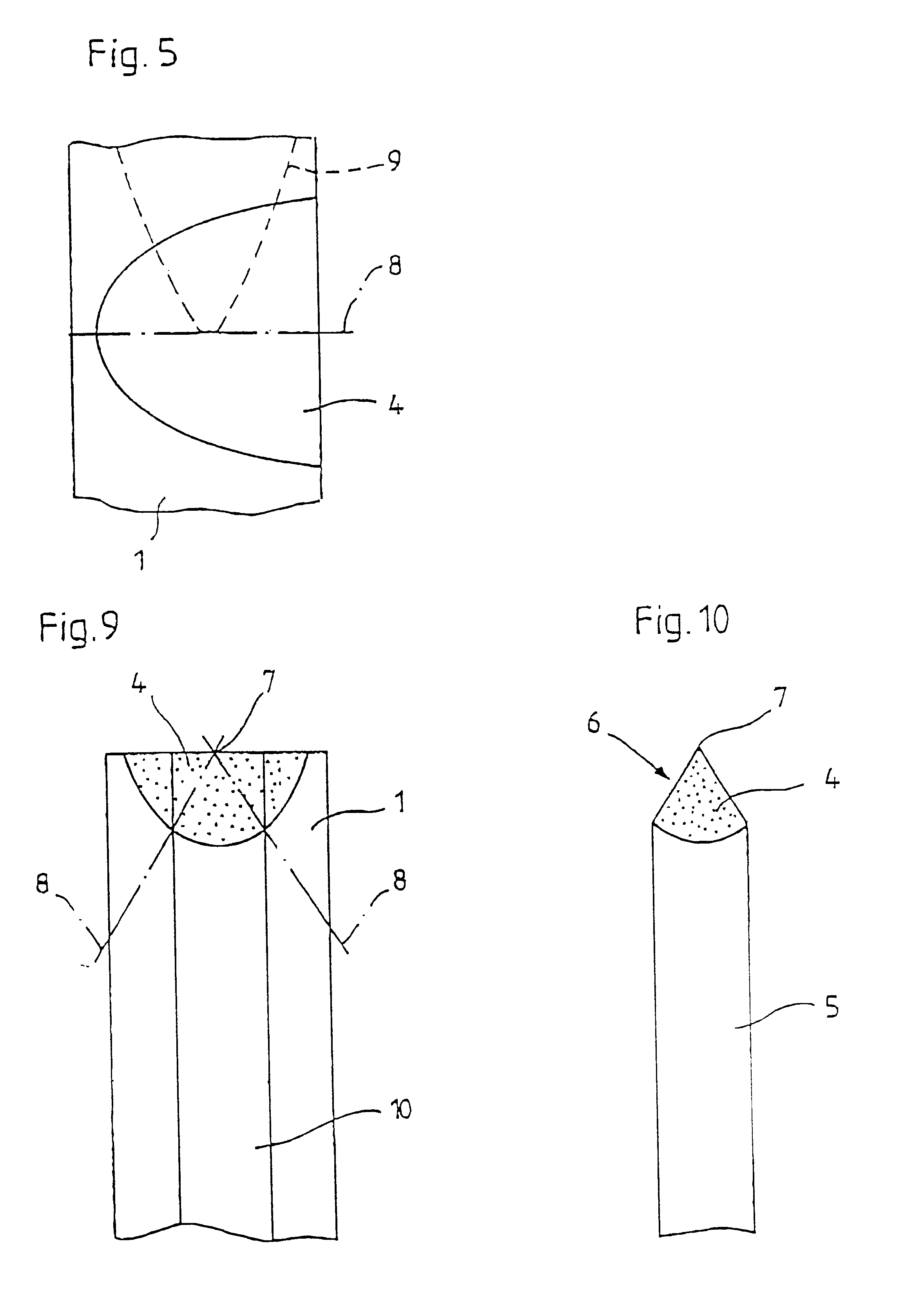Process for manufacturing a blade of a cutting tool and product manufactured therewith
a technology of cutting tools and blades, which is applied in the direction of cutting tools, furnace types, applications, etc., can solve the problems of knife becoming unsuitable for the intended use, hardening of the boundary layer, and affecting the use effect of the kni
- Summary
- Abstract
- Description
- Claims
- Application Information
AI Technical Summary
Problems solved by technology
Method used
Image
Examples
Embodiment Construction
The present invention will now be discussed in detail with reference to the drawings.
In FIG. 1, the initial workpiece labeled 1, from which the blade 5 of a cutting tool, in particular, a knife, is manufactured according to the process of the invention, is schematically shown. The initial workpiece 1 has a defined length, width and height and preferably consists of an alloyed steel such as X 20 Cr 13. Other suitable metals can be used as will be apparent to those skilled in the art.
In the first process step, a laser treatment of the blade base material is performed along the curve contour 2 determined by the ultimate edge of the blade. This is shown in FIG. 2. In particular, laser beam alloying and laser beam dispersion are suitable laser treatment processes. Both processes permit the targeted influencing of material properties by melting the base material and including suitable additive materials such as chromium, tungsten, molybdenum, titanium, vanadium, tantalum, nickel, cobalt o...
PUM
| Property | Measurement | Unit |
|---|---|---|
| thickness | aaaaa | aaaaa |
| angle | aaaaa | aaaaa |
| structure | aaaaa | aaaaa |
Abstract
Description
Claims
Application Information
 Login to View More
Login to View More - R&D
- Intellectual Property
- Life Sciences
- Materials
- Tech Scout
- Unparalleled Data Quality
- Higher Quality Content
- 60% Fewer Hallucinations
Browse by: Latest US Patents, China's latest patents, Technical Efficacy Thesaurus, Application Domain, Technology Topic, Popular Technical Reports.
© 2025 PatSnap. All rights reserved.Legal|Privacy policy|Modern Slavery Act Transparency Statement|Sitemap|About US| Contact US: help@patsnap.com



